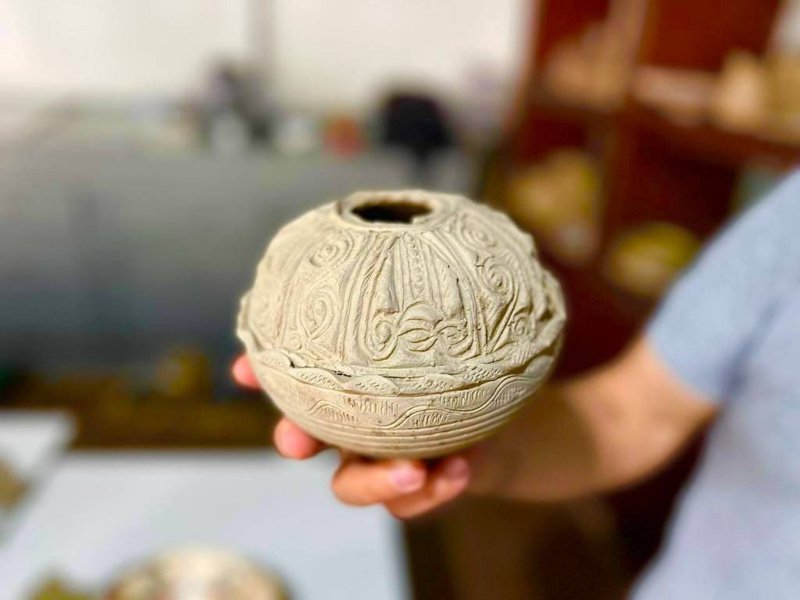Unique artifacts discovered in Uzbekistan's Akhsikent
Akhsikent, which holds a unique place in world civilization, has aroused the interest of the general public since ancient times, UzA reports.


In the area connecting Turakurgan and Mingbulak districts of Namangan region, archaeologists discovered a fully intact engobed vessel during excavations, dated to the 1st-2nd centuries AD. It is believed that this vessel was used to store medicinal liquids. Additionally, rare artifacts related to scientific activity from the 11th-12th centuries were found, including a mercury vessel, an inkwell, remnants of a workshop for separating chemicals and geological ores, a thousand-year-old water jug used in everyday life, a water container – a flask carried by caravans, intricately crafted ceramic toys, enamel cradle pots, as well as copper and bronze coins and various metal objects.

This season, four large engineering structures and almost 4,000 rare artifacts have been discovered here.

Open-air museums are currently being built at some of the excavations in Akhsikent, which has a rich three-thousand-year history.
It is worth reminding archaeologists made sensational discoveries in the territory of the Tolebaitobe 2 ancient burial ground near the village of Karaspan in Ordabasy district, Turkistan region, Kazakhstan.
